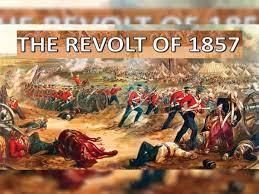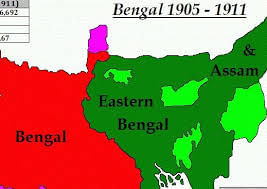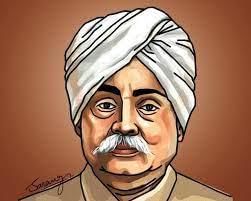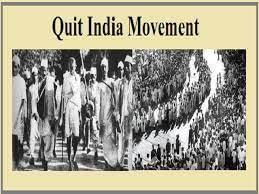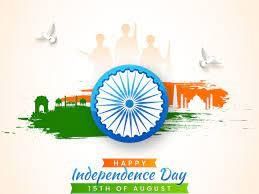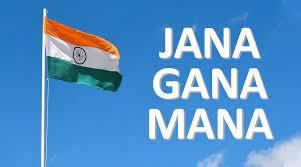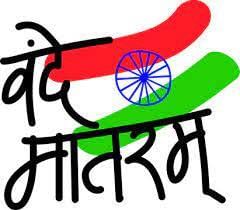Class 1 Exam > Class 1 Notes > General Knowledge for Young Learners > Independence Facts
Independence Facts | General Knowledge for Young Learners - Class 1 PDF Download
| Table of contents |

|
| Introduction |

|
| History of India’s Independence Struggle |

|
| How Do Indians Celebrate Independence Day? |

|
| Interesting Indian Independence Day Facts |

|
Introduction
The Indian freedom movement has a long, intriguing, and inspiring history. We bring some Independence day facts for kids to let them know about the struggles and sacrifices to get the freedom we now have. First, the Indian land was invaded by several rulers, including the Mughals, the Dutch, and the French. Then, India was under British rule for about 200 years. The Indian struggle for freedom is known for its non-violent nature and loaded with inspirational and passionate stories and lessons that inspire every one of us, including children.
History of India’s Independence Struggle
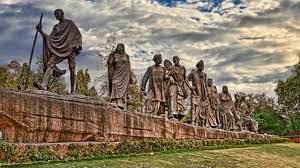
- The history of Indian Independence dates back to the 17th century when European traders established business settlements in the country. Using their military power, the British East India Company conquered kingdoms within India, and by the 18th century, they became a dominant power.
- World Wars I & II, loss of Indian freedom fighters and soldiers during the fight for freedom, political turmoil, the partition of India, riots, and displacement of the citizens were some of the unfortunate events that occurred during the pre-independence years.
- India got its independence on 15 August, 1947. On 26 January, 1950, the Constitution of India came into effect, and the country became a sovereign democratic republic.
How Do Indians Celebrate Independence Day?
- Every year on the 15th of August, the Prime Minister of India hoists the flag at the Red Fort in New Delhi. Government buildings and historical monuments are decked with lighting, while schools, government and private organizations hoist the national flag in the first half of the day. 15 August is a national holiday in India.
- Celebrations include drills, cultural events, singing of patriotic songs and re-enactment of scenes from the freedom struggle. People also show their patriotism by painting their faces in the tricolor, the three colors of India’s national flag – saffron, white, and green.
 |
Download the notes
Independence Facts
|
Download as PDF |
Download as PDF
Interesting Indian Independence Day Facts

- Vasco da Gama: In 1498, a Portuguese explorer named Vasco da Gama discovered a sea route to India, which paved the way for direct Indo-European trade and commerce.
- Goa – The Portuguese base: The Portuguese set up trading bases in Daman, Diu, Bombay, and Goa. Before 1961, Goa was a Portuguese colony and existed as their overseas territory for nearly 450 years.
- The Battle of Plassey: The rule of East India Company started in 1757 after the British won the Battle of Plassey against the Nawab of Bengal and his French allies.

- The Dutch exit: The Dutch East India Company started losing their influence and power in the 1800s. On 13 August, 1814, an Anglo-Dutch Treaty was signed between the United Kingdom of Great Britain, Ireland, and the Sovereign Principality of the United Netherlands. After the treaty came into force, properties and establishments held by the Dutch were returned to the British. By 1825, the Dutch lost all the trading posts in India.
- Indian Independence Movement: Spanning from 1857 to 1947, a struggle of almost 90 years, the Indian Independence Movement witnessed violent and non-violent methods of rooting out the British Empire from India.
- The Revolt of 1857: It was the first war of Indian Independence against the British. Bahadur Shah Zafar, Rani Lakshmibai, Nana Sahib, Mangal Pandey, and Tatya Tope were some of the freedom fighters who led the revolt using their young ’Sepoys’ or soldiers. Also called the Indian Mutiny or Sepoy Mutiny, this was an unsuccessful revolution against the British rule.

- Peer Ali Khan: A rebel against the British and part of the 1857 freedom struggle, Peer Ali Khan was given capital punishment in full public view by William Tayler, the commissioner of Patna in 1857.
- British Control: By the end of 1858, the British rulers had gained complete control over India.
- All India Congress Party: On 28 December, 1885, Indian National Congress party was formed by a retired British Indian Civil Service officer Allan Octavian Hume. The main agenda of the party was to establish a platform, which can create a civil and political dialogue.
- Partition of Bengal: Lord Curzon ordered the partition of Bengal in 1905, claiming it was a huge and populous state that required better administrative efficiency. However, it was clear that the partition was to limit the activities of the freedom fighters, who were gaining immense strength as the independence movement spread fast.

- Swadeshi Movement: Initiated in 1905, this movement set the foundation to promote ‘swadeshi’ or local goods and aimed at eliminating British power by boycotting the use of foreign products.
- Cellular Jail: British rulers set up a naval base at Andaman and Nicobar Islands. The construction of prisons there began in 1896 and was completed in the year 1906. The primary purpose was to use this Cellular Jail as a penal colony where the participants of the Freedom struggle could be placed. The jail, also referred to as Kala Pani, was used by the British to exile the political prisoners.
- Lala Lajpat Rai: Popularly known as the Punjab Kesari, he played a pivotal role in India’s struggle for freedom. He was deported to Mandalay, Burma in 1907 without any trial. Lord Minto, the Viceroy and Governor-General of India at the time, allowed him to return to India when not enough evidence was found to hold him for subversion.

- Khudiram Bose: He was one of the youngest freedom fighters, who were hanged and executed by the British in the year 1908.
- Embrace Swaraj: The first Indian nationalist to embrace Swaraj or independence as the destiny of India was Bal Gangadhar Tilak.
- Hind Swaraj: In his book Hind Swaraj, which was released in 1909, Mohandas Karamchand Gandhi mentioned that the British rule was established and survived only due to the cooperation of Indians. If Indians refused to cooperate, the British government would collapse and Swaraj would come. He wrote this book while traveling to South Africa from London.
- Ghadar Party: This was formed overseas in 1913 with an agenda to fight for India’s Independence. It had members from the United States, Singapore, Canada, Shanghai, and Hong Kong. They aimed for Hindu, Sikh, and Muslim unity against the British.
- The World War I: Contrary to the fears of the British Rulers, India provided immense support to the British war effort during the World War I. Nearly 1.3 million Indian soldiers and laborers served in Africa, Europe, and the Middle East. The British Indian government and the Princely states had sent enormous amounts of ammunition, food, and money to support the empire during the war.

- Chandra Shekhar Azad: Azad was an Indian revolutionary leader who formed the Hindustan Socialist Republican Army. In 1925, he was involved in a train robbery at Kakori and attempted to blow up the train in which the Viceroy of India was traveling.
- To avenge the killing of Lala Lajpat Rai, he was also involved in the shooting of JP Saunders. Chandra Shekhar Azad never wanted to be captured alive and shot himself during a gunfight with the British police officers. He died at Allahabad’s Alfred Park, which is now called the Chandra Shekhar Azad Park.
- Indian Home Rule Movement: The Home Rule Movement in India began under the leadership of Annie Besant and Bal Gangadhar Tilak during World War I. It lasted about two years and set the ground for the Independence Movement.

- Bipin Chandra Pal: An orator, Indian nationalist, and freedom fighter, Bipin Chandra Pal was the main architect behind the Swadeshi movement and also stood strong against the partition of Bengal.
- Bhagat Singh: He was an inspirational hero who joined the Indian freedom struggle at a very tender age and was executed at the age of 23. He was fluent in many languages.
- Shivaram Rajguru: A colleague of Bhagat Singh, Rajguru participated in the assassination of British officer JP Saunders in 1928 in Lahore. He believed India should be free by any means.
- Inquilab Zindabad: The famous slogan Inquilab Zindabad, which means long live the revolution, was raised by Batukeshwar Dutt. He was a revolutionary and freedom fighter, who worked closely with Bhagat Singh in the bombing of the Legislative Assembly in Delhi on 8 April, 1929.

- Sukhdev Thapar: An Indian revolutionary leader, Sukhdev Thapar was hanged at a very young age of 23. He was a senior member of the Hindustan Socialist Republican Army and organized small revolutionary cells in the Northern parts of the nation, especially Punjab. Sukhdev contributed to the Lahore conspiracy case and various revolutionary activities such as the Prisoner Hunger Strike in 1929.
- Gandhi-Irwin Pact: This pact was signed in March 1931 to free all political prisoners. But a few great revolutionaries like Bhagat Singh and his comrades were not set free and their death sentence was not withdrawn, which led to a turmoil within the Congress party and protests against the party.
- Non-violence: Gandhiji played a significant role in India’s struggle for Independence. He chose a non-violent route and his ideologies were based on peace and harmony. “The force of love and pity is infinitely greater than the force of arms. There is harm in the exercise of brute force, never in that of pity.” This message was conveyed in his book, Hind Swaraj.
- Indian National Army: Netaji Subhash Chandra Bose established the Azad Hind Fauj also known as the Indian National Army in 1942. His ideology was more towards complete unconditional independence for India, unlike Indian National Congress which wanted independence in parts.

- Matangini Hazra: A freedom fighter, she was a part of the Non-Cooperation movement and Quit India movement. Holding the tricolor in her hands, she led the procession. The Biplabi newspaper of the parallel Tamluk National Government commented: The police shot her three times. She continued marching despite wounds to the forehead and both hands.
- August Movement: The Quit India Movement, also known as the August movement, was launched in 1942 by the All India Congress Committee to demand an end of British rule. In 2017, 75 years after the movement, India Post issued a stamp honoring the Quit India Movement.

- Partition announced: In June 1947, Viscount Louis Mountbatten, who was the last Governor-General of India, announced the partition of India and Pakistan.
- River Indus: While some suggested the free country be called Hindostan, the leaders chose the English name India, which means the Country of River Indus.
- Cyril John Radcliffe: He was given the chairmanship of Indian Boundary committees and had to draw the boundaries of the two nations, India and Pakistan. It is said that he was disheartened at the chaos caused by his decision, displacing millions of people from their homes, and he refused the salary of Rs.40,000.
- Independence Day: On 15 August, 1947 at 12:02am India was declared a democratic and sovereign nation.

- 15 August: India shares the date of Independence with Bahrain, Korea, and Liechtenstein.
- Indian National Congress: Before his assassination, Gandhiji drafted a resolution for the Congress in his will and testament, written on 29 January, 1948, which read: “Though split into two, India having attained political independence through means devised by the Indian National Congress, the Congress in its present shape and form, i.e., as a propaganda vehicle and parliamentary machine, has outlived its use.”
- Hansa Jivraj Mehta: On behalf of all the women of India, Hansa Mehta represented Free India’s Parliament along with 15 other women.

- Rupee at par with dollar: When India became independent in 1947, the Indian Rupee was at par with the US Dollar as there were no outstanding credits on the balance sheet of India.
- Princely States: After gaining liberty, nearly 550 princely states joined together to unite as one nation, India. Hyderabad, the princely state of Nizams was the last to join the Indian Union in 1950.
- National Anthem: India did not have a national anthem when it became independent in 1947. On 24 January, 1950, the Constituent Assembly of India officially adopted the Jana Gana Mana as the National Anthem. The National Anthem of India and Bangladesh were written and composed by Rabindranath Tagore.

- Vande Mataram: Composed in Sanskrit, Vande Mataram was adopted as the National song of India in 1950. It was written by Bankimchandra Chatterji, who was an Indian poet, writer, and journalist.

The document Independence Facts | General Knowledge for Young Learners - Class 1 is a part of the Class 1 Course General Knowledge for Young Learners.
All you need of Class 1 at this link: Class 1
|
51 videos|98 docs|37 tests
|
Related Searches


